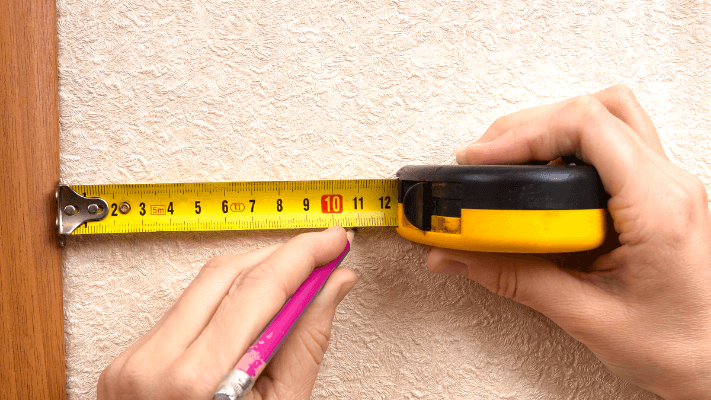As a mobile developer, you have one wish for your game → more players. Even better, players that can’t keep their hands off the game. A metric that shows how successful you are at doing this is called stickiness.
This is one of the key mobile game metrics to track if you want your mobile game to succeed.
With so many games out there competing for users’ attention, retaining users is becoming more challenging by the day.
In this article, you will learn what stickiness is, how it’s calculated, and why all successful developers track it. You’ll also find practical tips on what you can do to increase it.
In addition, we will cover the industry benchmarks to answer a very frequent question: What makes a good stickiness rate?
What Is Stickiness in Mobile Games
Every mobile game wants to attract users who play the game on a daily basis. Almost every mobile game tracks DAU (daily active users) and MAU (monthly active users).
However, standalone, neither of these two metrics show how frequently the app is used and how successfully does it retain users.
To put it simply, stickiness rate answers the question: How many monthly users play your game every single day?
Stickiness is defined as a ratio of daily active users and monthly active users. This metric indicates your game’s ability to retain players over a month’s time.
Here’s the formula for calculating the stickiness rate.

To demonstrate, if a game has 2,000 unique active players in a month, and 200 of them play the game daily, this counts as 10% stickiness.
If your stickiness rate is 10%, this means the average user is actively playing your game for 3 days in a month. The higher this ratio is, the more users are playing your game every day.
Keep in mind that the mobile industry comes with a diverse lingo, so you might often find stickiness called simply DAU/MAU, the DAU/MAU ratio, Stickiness Factor, or Sticky Factor.
Why You Have to Track It
Let’s say you invested a lot in ads, and it seems your paid advertising efforts finally paid off when you got a lot of installs. Great, but it’s not the time for celebration just yet.
Did you know 25% of users abandon apps after one use only? Moreover, only 32% of users return to an app 11 or more times after installing it, according to Localytics.
Many developers are so focused on the number of installs, they often fail to focus on an equally important thing → keeping the users they already have.
Obviously, losing app users is a normal thing.
What you can do to bring the abandonment rate for your mobile game to a minimum is to keep track of your stickiness rate, analyze trends, and make changes to your game accordingly.
Ultimately, no other KPI captures the core of user engagement and retention.
Here are some of the main reasons to track your game’s stickiness:
- It records how many users churn. If you get a lot of new users to install but lose them rapidly, your stickiness rate will decrease.
- It helps in understanding how valuable your game is to its users.
- If you track it over several months, it can show your game’s user retention trends.
- It can be used for revenue projections.
- It can be calculated for different cohorts on a monthly basis. By comparing this data, you can identify potential problems across groups.
- It is widely used so you can benchmark it against other games.
However, there are some things to keep in mind when tracking stickiness. It only calculates daily and monthly user activity, so all other time ranges in between (e.g. weekly) will not be calculated.
Another thing to consider is the fact that you can’t start measuring it during the first month after the launch. To calculate it, you will need at least 30 days of activity data. This is unfortunate for newly released games because a lot of games fail during the initial month.
Generally, measuring your game’s stickiness is a part of your game development and design decisions. Combined with competitor benchmarks, it can help you make strategic decisions.
Now let’s talk money.
After all, you want to earn from the game. What kind of role does stickiness play in this?
Obviously, your profits depend on how your users are going to interact with your game and how much they like it. A loyal user is more likely to spend. If you manage to create a player base that is stable and active, it will grow and develop quicker.
Even though stickiness is not in direct correlation to income, it reflects the users’ loyalty and engagement that affect the game’s earnings. Also, the users that play a game on a daily basis will watch more ads. This way, stickiness boosts your in-app revenue as well.

Stickiness vs. Retention
We’ve mentioned retention several times already, but remember retention is in no case a synonym for stickiness.
Let me explain the correlation between the two.
Stickiness does drive retention, but if your game successfully retains players it doesn’t have to be sticky.
Retention shows how successful a game is at constantly making players come back.
On the other hand, stickiness indicates how a game’s design affects the players to return on their own will.
With that being said, a well-designed game full of engaging elements will most definitely result in high stickiness and user retention.
How to Make Your Game Stickier
If the previous churn rate statistics bummed you out, here’s one to evoke some optimism. Top apps (mainly social apps) have a retention rate higher than 50% after 90 days’ time.
How do they do it though?
By hooking the users and making them go “wow”.
This is easier said than done, we know.
Fortunately, there are some techniques you can use to increase your mobile game’s stickiness. In fact, you can apply similar techniques you would normally use for increasing retention rates.
1. Simple Onboarding
When the user first opens your game, the last thing you want to do is make them feel bad. A complicated onboarding process will definitely do that.
Here’s what your should do instead:
- Keep it quick and easy to use
- Provide a game overview
- Display game value
Minimize the number of steps they have to take before they can start playing. If it’s necessary, educate them on how the game works, but don’t overdo it. It is a better idea to do it step-by-step as they play.

2. Regularly Add New Features
Give your players reasons to regularly come back to your game by introducing new features.
That can be anything from fresh gameplay, new assets, to challenges. If they liked the game in the first place but eventually got bored, this might encourage them to come back and check what’s new.
3. Notify Them With Push Notifications
The most common way of notifying the users about new features or anything else is through push notifications.
These SMS-like messages appear on the users’ home screens when they are not playing the game. When used the right way, they can drive a great number of users back to your game.
However, you have to be careful with them as they can cause the opposite effect and become annoying and ineffective. To get the most out of push notifications, think about:
- Personalized content
- The right timing
- Frequency
A great example of a tailored push notification is tracking at what time of the day the users usually play. If someone typically starts playing at 7 PM, and doesn’t log in until 7:30 PM, you can send out a notification at that time.
4. Use In-App Messages
Communicating with users is extremely important. For this reason, a lot of games use in-game messaging. They should blend in naturally with the game and not feel like a marketing tool.
Using in-app messages helps establish a user-game relationship, but also affects another important mobile game metric – session length.
The most important thing here is not to send out generic messages.
There are a couple of things you should do to send out the right messages to your players:
- segment players
- follow the players’ in-game progress
- make them feel special (personalize)
- create an emotional connection to the game
- watch out for too many messages
- never stop testing
One of the most important types of in-app messaging is monetization messaging.
And it’s quite tricky to make it right because players know your main goal is to sell them something. For this reason, you need to be extra careful about these messages. To help you to with this, we’ve created a detailed guide on monetization messaging, and you can check it out here.
5. Offers, Freebies, Giveaways
If your game is based on in-app purchases, handing out free stuff is a great way of making users re-engage with your game.
For example, you can hand out currency, lives, items, etc. Anything that makes sense for your game.
This will have a positive impact on two important user groups: the regulars and the occasional users. The regular users will feel rewarded, while those who didn’t play for a while might feel like giving it another try.
Don’t just randomly reward your players.
It’s best if you follow their user journey and bring them rewards at the right time.
For example, the players’ first-time user experiences should be extremely rewarding. Players should be able to experience premium gameplay and not feel anything lacking.
Later on, you can reward players for in-game accomplishments, after completing IAPS, for watching rewarded video ads, etc.

6. Encourage Feedback
Your game has to provide the players with the option of communicating with you. The only way of finding out what your users want is if they leave feedback. After all, the purpose behind this is to solve the users’ problems and improve the game.
Another benefit of in-game feedback is that it might stop the players from leaving negative reviews in the app store.
This kind of feature will also help you build a better relationship with the user. Consequently, this can result in increased engagement and retention rates, more loyal users, and better app store ratings.
7. Establish a Social System
The relationship between the developer and the player is not the only one that you should nurture.
Players also like to engage with each other, so make sure to include social features in your game.
Social features allow players to compete with others, show off their progress, and feel challenged. Equally important, they make them feel like a part of a community.
Some of the most popular social features in mobile games include:
- in-game chat
- social media connection
- trading systems
- leaderboards
- co-op modes
- PvP modes
- sharable achievements

8. Track Your Most Valuable Players
There are some users you should try to keep no matter what. They are often referred to as power users. Find out who are your most valuable players and track their in-app behavior. Answer the following questions:
- How do they navigate through the game?
- Which features are they interacting with most?
- Who are they (demographics, interests)?
From this, you might find out what makes them come back over and over again. This can give you ideas on how to get more out of them, but also figure out how to fit more users into this group.
Remember, these users deserve VIP treatment. To ensure this, encourage their behavior by giving them perks no other players can get.
9. Create a Loyal Player Base
If you implement all the previous steps, you’re on the right path to building a loyal pool of users. These users can identify themselves as a part of a community and feel motivated to continue playing.
The player motivation can come from different game elements:
- Personalized content
- Rewards program
- Special challenges
- Social factor
- Missions
- In-game achievements
Finding the right loyalty solution will depend on your game type and may take a while to figure out. But once you find it, it can be a real game-changer.
10. Add Meta-Layers
Another great way to improve stickiness, especially for (hyper) casual games and games with simple core gameplay, is to add various meta-layers.
Meta-layers refer to additional game features that complement core gameplay. For example, the addition of decoration and design mechanics or narrative choice-based game elements. It’s up to you and your imagination.
However, meta-layers should also be strategic in the sense that you need to add features that will appeal to certain groups of players you want to acquire. This is why meta-layers also broaden your target audience.
To increase stickiness, the meta-layers should also appeal to your existing audience.
The goal is to provide players with something to work towards, which will make them come back to the game time and time again.
Stickiness Rate Benchmarks for Mobile Games
What makes a good stickiness rate?
To answer this common question, we have to separately observe different app types:
- For mobile games, a 20% stickiness rate is considered good
- For social/messenger apps, it should be about 50% (Devtodev)
- Anything less than 7% for any app type is considered bad
As you can see, stickiness is extremely important for social apps. In fact, it was Facebook that popularized it in the first place. After looking at Facebook’s analyses, other apps started tracking it as well.
Now let’s dive deeper into mobile gaming stickiness benchmarks.
The yearly overview of stickiness in mobile games shows a seasonal drop during the holiday period, between Christmas and New Year. This makes sense since this period makes people’s lives busier than others, so people don’t have as much time to play mobile games (GameAnalytics).

To answer the initial question about what makes a good stickiness rate, we have to differentiate between game genres as well.
There are some genres that are simply more sticky than others: Puzzle, Board, Card, Casino, and Word games. The genre that stands above others are Casino games, reaching up to 26% in stickiness rate. In this genre, the average value (over 20%) is higher than the top values for most other genres. Even more intriguing, the lowest-performing Casino games have a stickiness rate of over 15%!
To compare, Puzzle games are among the stickiest genres as well, with top-performing games reaching about 21% stickiness. However, the average values for this genre (13% stickiness) and low performers (7% stickiness rate) don’t follow the same trend.
In the leading games of all of the top genres combined (top 25%), the stickiness rate is over 20%.
On the other side, Racing and Action games seem to be the least sticky among genres, staying well under 10%.
Generally, for all genres, anything over 14% can be considered a good stickiness rate.
Wrap Up
As its name suggests, stickiness is the glue that holds your game and players together.
It is tightly connected to other engagement metrics such as user retention and churn rate, but it is not the same thing.
Measuring the stickiness rate on a monthly basis can give you significant insights into the value your game brings to its players.
Increasing a game’s stickiness is a challenging task, but it can be done. Keep an eye on the competition, learn about best practices, and apply what makes sense for your game.
In the long run, we track this metric for two purposes: creating happy, loyal users and making a profit.







Comments